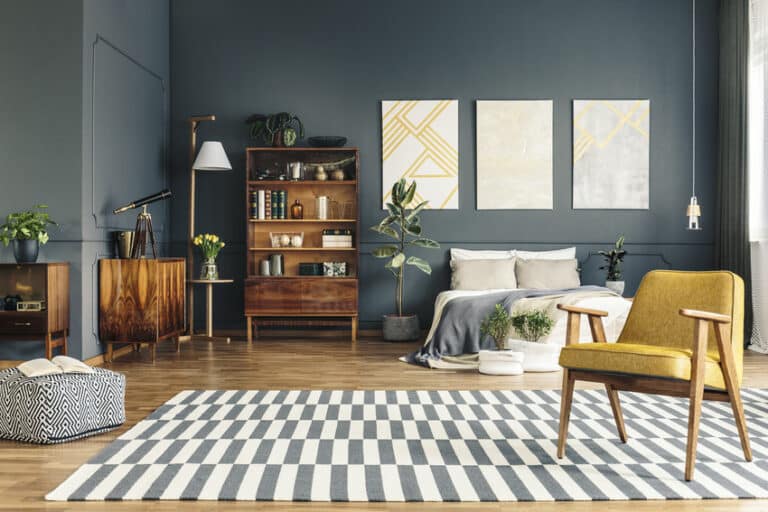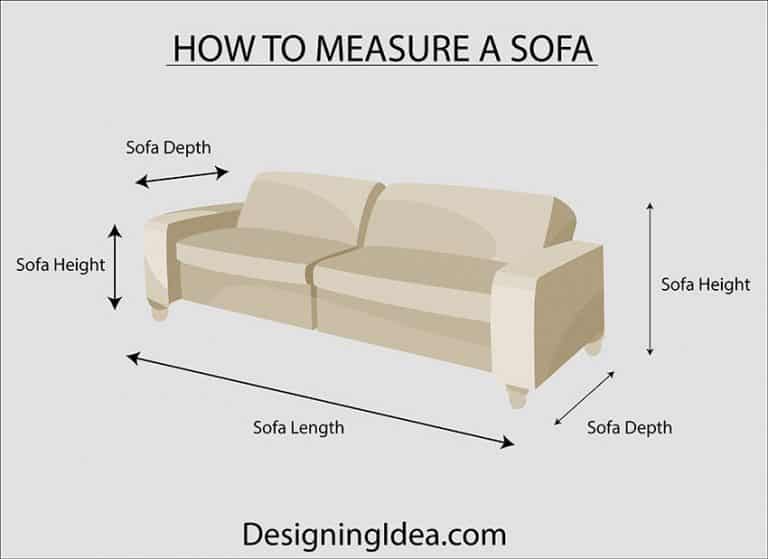Different Types of Pillows (Best Shapes & Styles)
Welcome to our guide to the different types of pillows, including standard pillow sizes, materials, and features to help you get the best night of sleep.
 Most of us aren’t getting enough sleep. Stress and electronic devices often take the brunt of the blame, but your pillow might affect you more than you think.
Most of us aren’t getting enough sleep. Stress and electronic devices often take the brunt of the blame, but your pillow might affect you more than you think.
Types of Bed Pillows
The most common types of pillows are sold at your big box stores. These are your typical down, feather, allergen-friendly feather alternatives, and sometimes, memory foam pillows. Before you order a new one, take the time to learn about different pillow types and what they offer.
Down Pillows
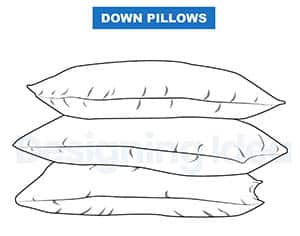
Birds have two kinds of feathers; contour and down. Contour feathers have a rigid shaft and a quill point.
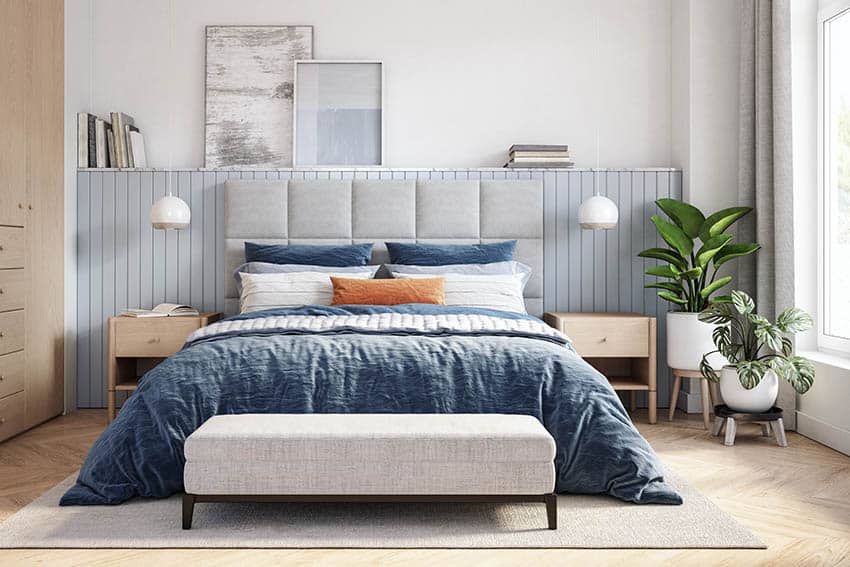
A goose down decorative cushion is stuffed with the soft, spineless, fluffy feathers that form the undercoat of an adult goose. A common misconception is that only goslings and ducklings have down.
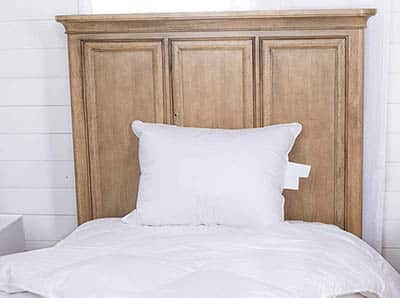
(See this 100% goose down cushion at Amazon)
This type doesn’t offer much in terms of support. You put your head on a down cushion, and it squishes into it.
Grab a down pillow if you don’t need as much neck or head support. If you like the softness of down, grab one to put on top of a more supportive pad and get the best of both worlds. For those with allergies, alternative synthetics mimic how down feels.
Memory Foam Pillows
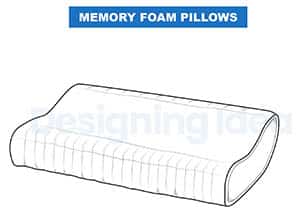
Once warmed up, it conforms to your curves and adjusts to support your shape. When you shift your weight, the cushion will slowly return to its original position.
Originally introduced as a product for mattresses, the memory foam industry has expanded to include cushions.
This product can be soft or firm, depending on the density and type of foam used.
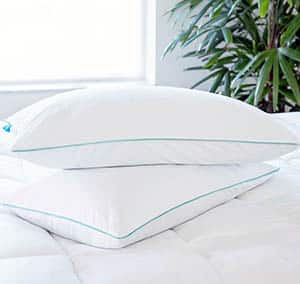
Plumperscan be stuffed with a solid piece of memory foam or small, irregularly shaped memory foam pieces usually labeled as shredded memory foam.
Discovered by NASA in 1966, memory foam or ‘temper foam’ was created by introducing gas to a polyurethane mixture. Memory foam compresses when heat and pressure are applied but resumes its original shape once weight is removed.
This type of cushion comes in many shapes and sizes, from neck rolls to more specialized cushion types for side-sleepers and those with sleep apnea.
Latex Pillows

It also has the edge over memory foam regarding heat and moisture dissipation. They are long-lasting, hypoallergenic, and won’t clump or lump.
Natural latex is derived from plants and trees but can also be produced synthetically.
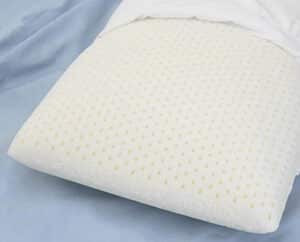
You can choose between natural and synthetic latex. Synthetic latex cushions often come with a chemical smell.
This should dissipate with time, but to avoid it entirely, choose natural latex.
(See this latex foam pillow on Amazon)
Down-Alternative Pillows
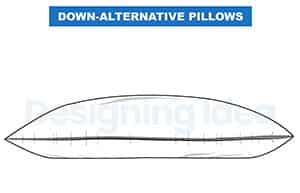
These hypoallergenic cushions are sold as ‘faux down’ or ‘synthetic down.’ Instead of harvesting the soft undercoat of feathers from a duck or goose, synthetic ‘feather’ clusters fill the plumper. These clusters are composed of materials like cotton, rayon, and polyester.
Down alternatives aren’t a perfect substitute for down. It’s not as fluffy (the technical term is ‘high loft’); therefore, it will take more material to fill the same amount of space.
This is why down-alternative cushion products are usually heavier than their down counterparts. Because there is less space between each piece of fluff, they are less breathable than down and won’t retain heat, so stick with down unless your allergies make it impossible.
Feather Pillows
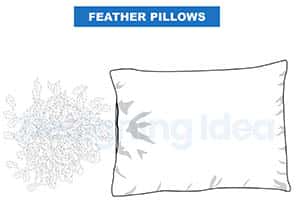
This cushion doesn’t squish as much as down, but they don’t offer great support so that you might need a firmer plumper underneath.
Stiffer feathers with quills called contour feathers are harvested from adult geese to make goose feather bolsters. If it doesn’t say ‘down,’ it’s stuffed with contour feathers. They are stiffer, sturdier, and include a quill.
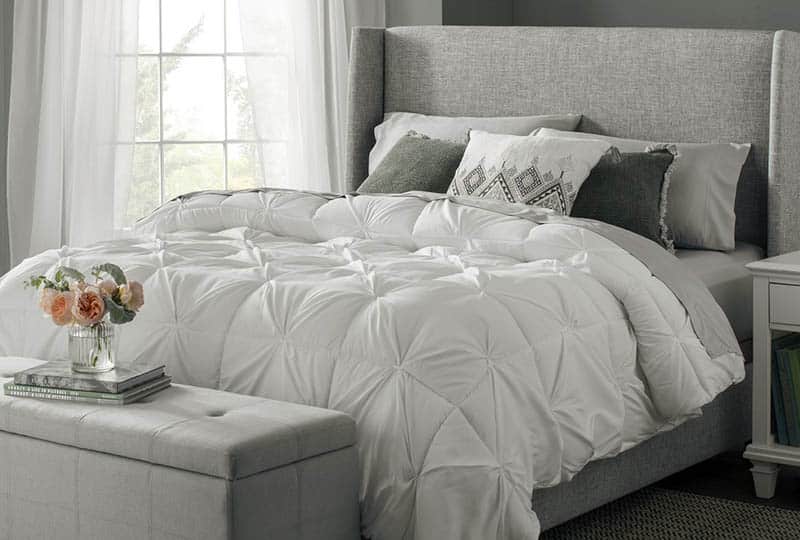
Quills can be sharp enough to poke through the loosely woven fabric, so a case with a tight weave and a high thread count is essential. Similar to down, there are synthetic allergy-friendly alternatives.
Polyfill Pillows
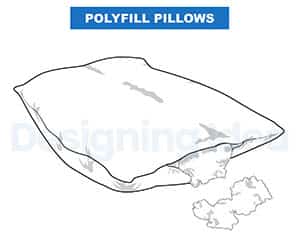
The resulting product is fiber or poly fill, the least expensive cushion-stuffing material.
Polyester Fiberfill, sold generically as ‘polyfill’ or under the brand name ‘Poly-Fil’, is a fluffy synthetic cushion-stuffer.
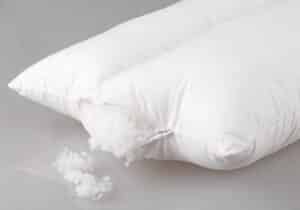
With repeated use, polyfill will clump together, giving you a lumpy bolster and a reduced useful life of the product.
Polyester is a synthetic, non-breathable material; polyfill retains heat rather than disperse it.
Innerspring Pillows
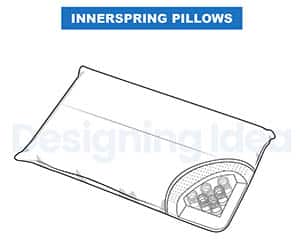
Metal coils (usually steel) absorbed the body’s weight, while padding and stuffing provided comfort.
However, many people still prefer the support of innerspring mattresses to the squishy molding of memory foam.
You might also appreciate an inner spring pillow if you’re one of those people. Just like the mattresses that inspired them, these cushions have coils inside that support the weight of your head and neck.
Individual springs are sewn into pockets of breathable material, allowing each coil to respond independently to applied pressure.
Specialty Pillows
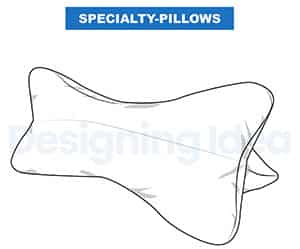
Microbead Pillows

Similar to the filling used for bean bag chairs, but smaller and more densely packed, the first popular microbead pillow was u-shaped and designed to support your neck while sleeping upright, as on a plane or train.
Novelty or decorative microbead padss are widely available, but full-size varieties have never caught on in America.
They are, however, popular in Japan, as a substitute for the buckwheat cushions that have been in use in that country for over 600 years.
This filling can be used as a hypoallergenic alternative to buckwheat.
(See this microbead pillow at Amazon)
Buckwheat Pillows
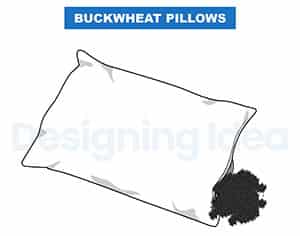
The filling for the buckwheat pad is created from the husks of buckwheat seeds.
These are the most popular in Japan. In Japan, those husks fill small cases of all-natural, unbleached cotton known as Sobakawa.
These are now available all over the world. They offer firm, unyielding support that many swear by to alleviate neck pain. Detractors of buckwheat cushions complain that they are too noisy, hard, and small.
Body Pillows

Rather than going under your head, they are positioned alongside you in the bed to support various body parts.
Body pillows, as well as more decorative bolster pillows, conform to your body and provide added support for sleeping and lounging. – Knack Dorm Living, Casey Lewis
The length allows one to nestle them under your head, hug them, and wrap your legs around them, giving you better spinal support from head to toe than a smaller pad.
These are also available in U and C shapes for more specialized pregnancy support. Pregnancy body rests take that support a step further, offering extra support for your belly.
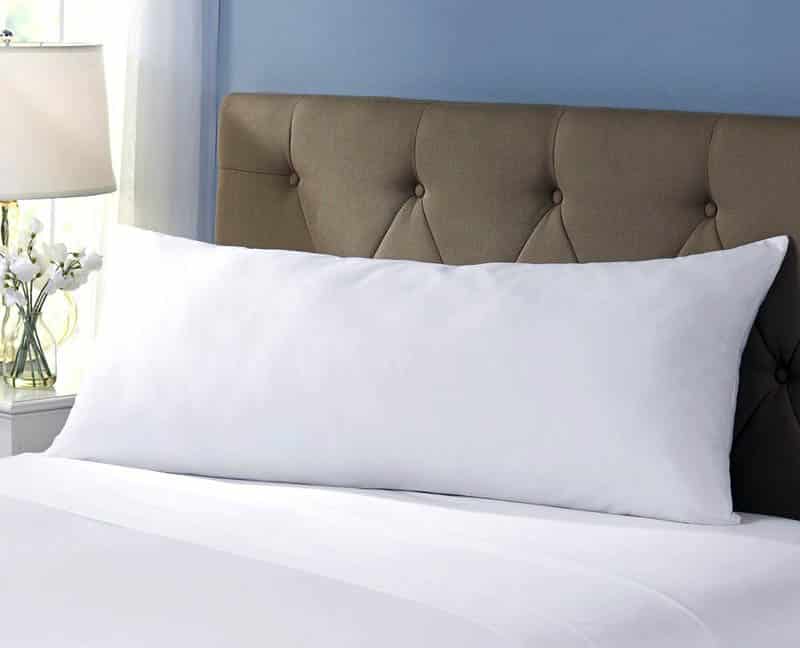
Lumbar Pillows
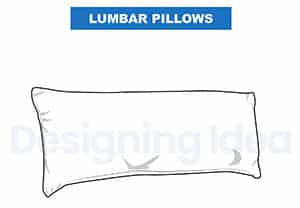
Back pain, especially in the lower back, can benefit greatly from a correctly-placed pillow.
These are made specifically to fit in the lumbar area, providing the correct support to allow your back to relax and make it easier to sit or sleep.
Sitting all day shortens our hip flexors, pulling the pelvis and lumbar spine out of alignment and making it difficult to sleep comfortably at night.
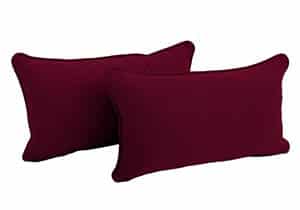
For example, some are intended for use in chairs, while others are suitable for sleeping.
They may also be effective for helping with pain associated herniated or ruptured discs, sciatica, strainsm, sprains or traumatic back injury.
Wedge Pillows
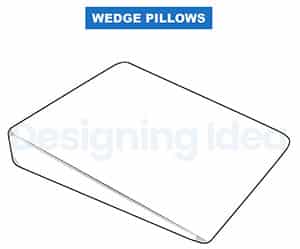
They are usually made with foam or fiberfill and will support your upper body or lower body, depending on how you arrange them.

Pregnant people may also use them to support their growing bellies. Others claim wedge pads may be effective for easing heartburn and sinus pressure.
Travel Pillows
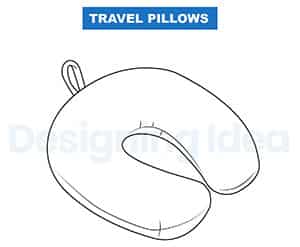
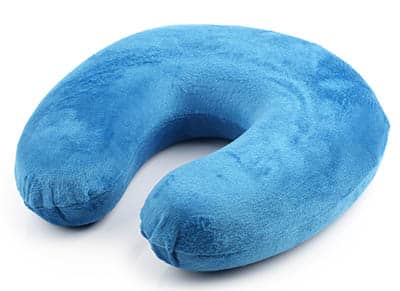
Decorative Pillows
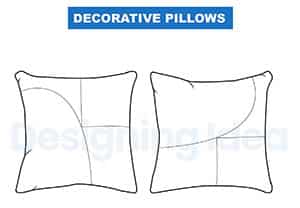
It can be a great way to add your favorite color to the space without it becoming overpowering.
Smaller decorative cushions in front of larger ones are generally called cushions. They are often square and can range in size.
Sizes 0f Pillows
In America, using one or two rectangular pillows to sleep is common. These vary in size according to the sleeper’s preference and the bed’s size. Large, thin, square versions are often used in parts of Europe.
Size Chart for Pillows
 Standard Size
Standard Size
These are best for full-size beds. They measure 20” x 26” and fit in a standard size pillow case.
King Pillow Dimensions
They are not longer than other pillow types but simply wider. They measure 20” x 36” and require king size pillow cases.
Pillows for Queen-Sized Beds
These can usually fit inside standard pillow cases. They are intended for queen-size beds and measure 20” x 30”.
Euro-Sized Pillow
These are squares, and measure 26” x 26”. They are usually thinner than standard, queen, and king size variants, allowing them to be molded and folded.
Pillow Measurements for Low-Back Support
The three most common sizes of low back supporting pillows are: 12″ x 18″, 12″ x 24″, 14″ x 36″
Sizes of Bed Pillow
Most pillow types for the bed are 20” high. They vary in width from 20” – 36”.
Sizes of Body Pillow
The average body pillow is 20” x 54”. A U-shaped body pillow is typically 55” long, 27” wide, and 6” high. The typical size of an L-shaped body pillow is 54” long, 14” wide, and 5” high. An average C-shaped body pillow is 57” long, 28” wide, and 7” high.
Sizes Of Standard Throw Pillow
18 x 18” is the most common throw pillow size. ‘Throw’ sized pillowcases are usually 18 x 18”.
Pillow Cover Materials
 Natural Pillow Materials
Natural Pillow Materials
The most popular types of natural pillow cover materials are cotton, linen, wool and silk.
Cotton pillowcases feel fresh and crisp, but might not be the best for your skin and hair, because it absorbs oil while you sleep. Silk pillowcases provide less friction than cotton, and are easier on your face and tresses.
The best natural material for pillow covers, though, is linen. Made from flax, linen provides effective insulation, keeping you comfortable. Flax is also naturally hypoallergenic and resistant to fungus and mold.
If you’re prone to the night sweats, a merino wool pillowcase can help wick perspiration away while you snooze.
Synthetic Materials for Pillows
Nylon and polyester are the two most common synthetic pillow cover materials. Either is fine for decorative or throw pillows.
Synthetic fabrics retain heat and moisture, making them a poor choice for bedding material.
Best Pillow Features

Thin Pillow Profile
If you sleep on your back or your stomach, your head only needs to be raised a few inches off the mattress for maximum comfort.
Those designed for side sleepers are much thicker, and can lead to neck pain if used for back or stomach sleep. Thin profile pillows solve this problem, cushioning and comforting the head and neck without raising it at such an extreme angle.
Pillow Spinal Support
When you sleep, your muscles relax, and gravity takes over. Without proper spinal support, you may wake up very uncomfortable.
While the mattress plays the biggest role in spinal support, the role of pillows should not be taken for granted, either. There are pillow types designed to be used in bed to support the lower portion of the spine.
Pillow Neck Support
If your neck needs extra support, several options are on the market. The part of the spine from your shoulders to your skull is called the ‘cervical spine’.
Those that support the cervical spine need to be firm enough to hold your head at an appropriate angle, while also relieving pressure points.
Chiropractors often recommend water pillows for people that need neck support while sleeping. A water pillow has an internal, waterproof pouch that can be filled to your desired level of firmness for the most customized neck support possible.
Passive Cooling Pillows
Passive cooling pillows are designed to keep your body heat from accumulating in your pillow in the middle of the night.
This objective can be achieved in multiple ways, from moisture-wicking fabric to airflow-boosting fillers.
An active cooling pillow uses ice, specialty gel, or a water bladder to cool down the sleeping surface. These are newer on the market but quickly rising in popularity.
Extra Soft Pillows
Extra soft pillows don’t offer as much resistance to weight or pressure as the firm variants do. This makes them ideal for stomach sleepers, as they provide comfort but won’t strain the neck.
Removable & Washable Pillow Covers
Because memory foam and latex pillows can’t be machine-washed, they often come with a durable, stain-resistant cover that zips off.
Hypoallergenic covers create an impermeable seal so that dust mites and other allergens can’t penetrate your pillow.
Adjustable
Every person’s body is different, from the width of their shoulders to their weight distribution, and adjustable pillow types acknowledge these differences.
Side sleepers will likely benefit from a pillow that is adjustable in some way. Usually, pillows are permanently sealed inside their fabric cover during manufacturing.
Adjustable pillows have a zip installed so that filling can be removed or inserts can be added.
Allergy Reducing
There are two ways to reduce the allergen-storing potential of your sleep surface: hypoallergenic filler, and hypoallergenic covers.
A hypoallergenic cover or case on a non-hypoallergenic material pillow has been shown to decrease dust mites significantly.
Combining an allergy-reducing cover with hypoallergenic filler material is the most effective allergy-reducing solution.
It’s also good idea to regularly vacuum areas that collect dust, such as the bed headboard, especially if it is made of fabric.
Snore Reducing
Many people whose partners complain about snoring find that their pillow is partially to blame. The upsurge sales of anti-snore pillows on the market provides hope for everyone within earshot of a snorer.
Options to try include; pillows that raise the head, ones that encourage side-sleeping through a raised middle section, or pillows with cutouts to accommodate your CPAP mask.
While snoring due to medical causes can not usually be eliminated, it can often be reduced with the right pillow.
Cradling
Pillows designed to cradle your neck and head use varying thicknesses of materials like memory foam and latex to sculpt gentle, supportive curves.
These curves provide a place for the user to nestle into, receiving support on multiple surfaces such as the side and back of the head, the sides of the neck, and the collarbone.
Conforming
When you sleep, your spine should be in a neutral position, ears above shoulders, chin in a straight line with your sternum.
Conforming pillow types respond to the pressure of your individual body, allowing you to maintain neutral spine alignment while your muscles relax.
Pillow Care &Tips
 How Often Should You Replace Pillows
How Often Should You Replace Pillows
Plan to replace your pillow about once every two years. Cheaper filler materials will clump and compress, and even more expensive options will degrade over time.
If you can fold the pillow in half and it doesn’t bounce back, it’s time to replace it. If you wake up with neck pain, you need to replace your pillow, no matter how old.
How to Wash My Pillow
Those with polyester or polyfill materials respond well to machine washing and drying. Choose a gentle cycle and a small amount of mild detergent.
Can You Wash Pillows With Feathers In Them
Yes! In fact, you should. All types of feather pillows are machine-washable. Experts recommend washing them every six months to keep them fresh, fluffy, and clean.
How to Wash Down Pillows
Feather pillows can go into any standard washing machine. Load two at a time to keep the machine balanced.
Choose a neutral soap, and add an extra rinse cycle to make sure no trace of soap remains. Spin at the fastest speed possible to get all the water out. You can use non-chlorinated bleach if you like.
Fabric softener isn’t necessary and may coat the surface of the feathers, causing them to clump and your pillow to deflate.
When it’s time to dry, put your pillows in the dryer for a regular cycle and then fluff them by hand to check for dryness. It may take several cycles before they are truly dry.
Stick with it as damp feathers are susceptible to mold. Toss a few tennis balls in the dryer for extra fluff to them and a faster dry time. Fair warning, it will be very noisy, but your dryer won’t be damaged.
 How to Wash Memory Foam Pillow
How to Wash Memory Foam Pillow
Memory foam pillows are not suitable for machine washing. However, they can be easily and effectively cleaned by hand using a bathtub.
Fill the bathtub partway with water and add a small amount of mild detergent. Submerge the pillow in the water and allow it to soak up the water like a sponge.
Remove the pillow from the water, squeeze the liquid out, and repeat the submerge-squeeze cycle twice.
When you’re satisfied that the pillow is clean, change the soapy water for clean water. Soak and gently squeeze your pillow a few more times in the clean water until the soap has washed away.
No twisting or wringing, you don’t want to damage the foam. Air circulation and sunlight are both helpful to the drying process, but avoid direct heat. Never put a memory foam pillow in the dryer.
Are Feather-Style Pillows Good
Feather pillows have many good qualities. They are extremely soft, comfortable, and satisfying to fluff up. The dust-mite trapping quality of the feathers may make them less appealing to allergy sufferers.
What is a Pillow Sham
People who want their bed to be functional and beautiful often use pillows as decoration. Decorative ones are covered with shams.
A sham is a type of pillow case, but that is meant to be displayed rather than slept on.
Shams often, but not always, match the bedspread, quilt, or duvet cover. They tend to be made from stiffer material than cushion cases.
Be picky when choosing a pillow! A good tomorrow depends on getting good sleep tonight. Your plumper is just as important as your mattress for having sweet dreams.
For more ideas about getting a good night’s sleep check out our article about the most popular types of beds.

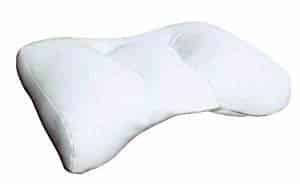
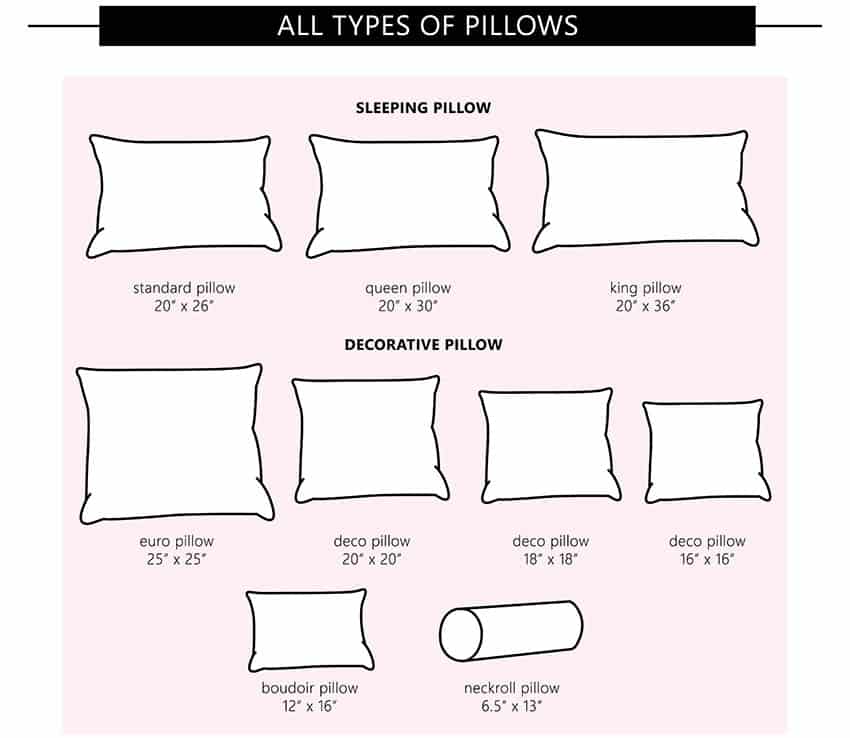 Standard Size
Standard Size Natural Pillow Materials
Natural Pillow Materials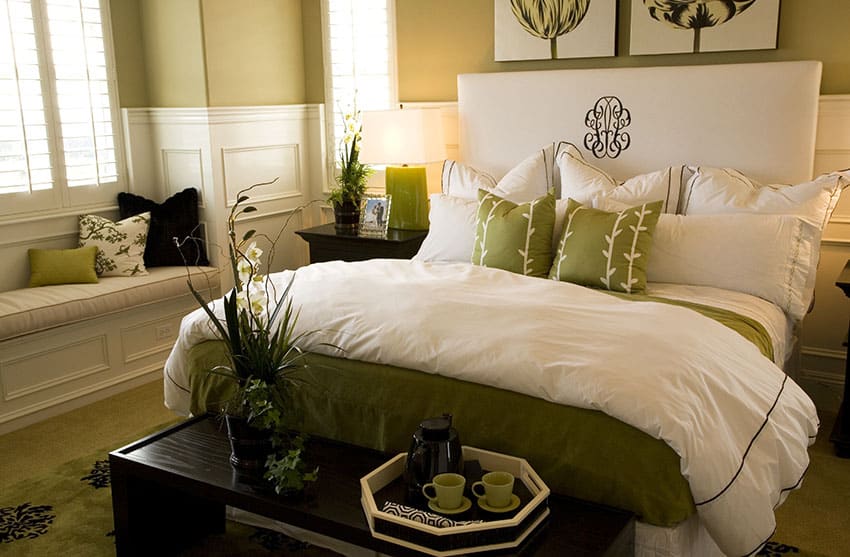

 How Often Should You Replace Pillows
How Often Should You Replace Pillows How to Wash Memory Foam Pillow
How to Wash Memory Foam Pillow
